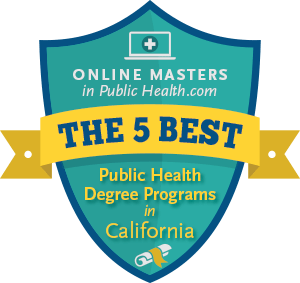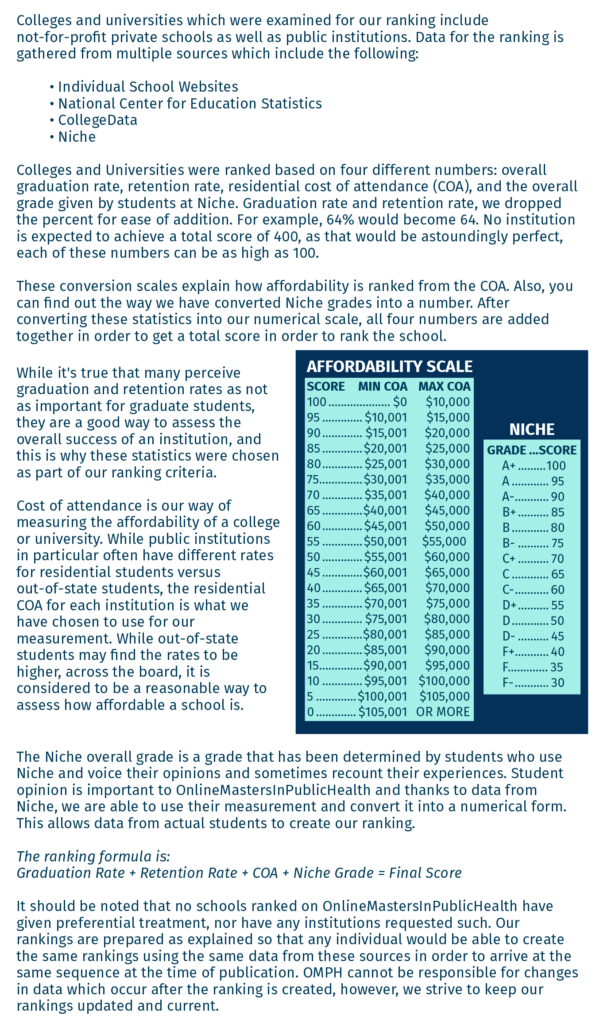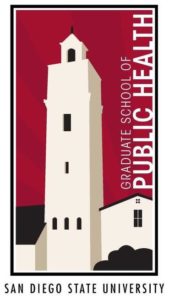 California is the most populous state in the country (39.5 million residents), and the third most expansive. It has the largest economy of any state in America, and if it were a country, it would be the fifth largest economy in the world. Its booming entertainment and technology industries, as well as its generally warm weather, have made it one of the most desirable places to live and work in the country. It is a nexus for transportation, immigration, interstate commerce, extreme weather, and a litany of factors that add to the breadth and strength of its higher educational options, as well as its need to produce competent public health professionals.
California is the most populous state in the country (39.5 million residents), and the third most expansive. It has the largest economy of any state in America, and if it were a country, it would be the fifth largest economy in the world. Its booming entertainment and technology industries, as well as its generally warm weather, have made it one of the most desirable places to live and work in the country. It is a nexus for transportation, immigration, interstate commerce, extreme weather, and a litany of factors that add to the breadth and strength of its higher educational options, as well as its need to produce competent public health professionals.
California is a trendsetter culturally, scientifically and educationally. It has the most public health degree programs (over 120) in the country. Over 17 California universities offer some type of program in public health. It is also far ahead of other states in terms of public health data collected and access to it. Many of California’s top Master’s in Public Health offerings from its most respected schools can be accessed online, allowing students from all over the country and the world to reap the benefits of a California Public Health education. Also, because one of the state’s main strengths is technological integration and delivery, earning your degree online from a California school will likely be a more efficient, seamless process than from a state that is still catching up with online higher education distribution and execution. On this list we’ve ranked five of the best public health degree programs in California, based on the following methodology:
Methodology
In order to complete the ranking for The 5 Best Public Health Degree Programs in California, we here at OnlineMastersinPublicHealth began our task finding MPH programs available in the state of California. These were then examined to see if the programs were able to be completed online, partially online, or if the programs were on-campus. Programs that were found to be online, with minimum or no participation on-campus, were then examined and evaluated considering the schools which offered them. We then followed a standard methodology which is explained below.

5. California State University – Northridge
 CSUN is a public university and member of the 23-campus California State University. It was founded in 1958. Currently, there are nearly 40,000 students and a 26:1 student-to-faculty ratio. CSUN offers 134 different bachelor’s degrees, 70 distinct master’s degrees, 3 doctoral degrees, and 24 teaching credentials. Approximately 50% of its students take classes online. CSUN’s Matadors compete in the NCAA Division I and include men’s and women’s teams in basketball, cross country, golf, soccer, indoor and outdoor track and field, and volleyball. Notable alumni of CSUN include singer Paula Abdul, actress Eva Longoria, and a plethora of business executives, athletes, entertainers, writers and more.
CSUN is a public university and member of the 23-campus California State University. It was founded in 1958. Currently, there are nearly 40,000 students and a 26:1 student-to-faculty ratio. CSUN offers 134 different bachelor’s degrees, 70 distinct master’s degrees, 3 doctoral degrees, and 24 teaching credentials. Approximately 50% of its students take classes online. CSUN’s Matadors compete in the NCAA Division I and include men’s and women’s teams in basketball, cross country, golf, soccer, indoor and outdoor track and field, and volleyball. Notable alumni of CSUN include singer Paula Abdul, actress Eva Longoria, and a plethora of business executives, athletes, entertainers, writers and more.
CSUN’s Master of Public Health gives students an in-depth education in biostatistics; environmental health; epidemiology; health policy and management; and social and behavioral science. Students will also build real-world experience through field training in the public sector as a part of this program. Graduates often go on to work in public health, nonprofits, clinical and patient education, health advocacy, research, academia and much more. This program can be completed in two years, and its next application deadline is March 31st, 2018. This program’s tuition is $31,584 for Fall 2018, but students may be eligible for financial aid.
4. California Baptist University
![]() CBU is a private, Christian, liberal arts headquartered in Riverside, California. It was founded in 1950. Currently, the school serves over 9,150 students and offers an 18:1 student-to-faculty ratio. CBU offers 76 majors and 52 minors for undergraduates, as well as 31 master’s and three doctoral programs. CBU competes in NCAA Division II, and offers men’s sports in baseball, basketball, cross country, golf, soccer, swimming, and diving, track (distance), volleyball, water polo, and wrestling. Women that attend CBU can compete in basketball, cheerleading, cross country, golf, soccer, softball, swimming and diving, track (distance), volleyball, and water polo. Notable CBU alumni include California Assemblyman Nathan Fletcher, author and religious leader Rick Warren, pageant contestant and reality star Dustin-Leigh Konzelman, among others.
CBU is a private, Christian, liberal arts headquartered in Riverside, California. It was founded in 1950. Currently, the school serves over 9,150 students and offers an 18:1 student-to-faculty ratio. CBU offers 76 majors and 52 minors for undergraduates, as well as 31 master’s and three doctoral programs. CBU competes in NCAA Division II, and offers men’s sports in baseball, basketball, cross country, golf, soccer, swimming, and diving, track (distance), volleyball, water polo, and wrestling. Women that attend CBU can compete in basketball, cheerleading, cross country, golf, soccer, softball, swimming and diving, track (distance), volleyball, and water polo. Notable CBU alumni include California Assemblyman Nathan Fletcher, author and religious leader Rick Warren, pageant contestant and reality star Dustin-Leigh Konzelman, among others.
CBU Online offers a Master’s in Public Health that can be completed in 16 months (on average) and requires 44 major units. The cost is $853 per credit or approximately $38,000 for the major courses. Core curriculum covers topics like epidemiology, biostatistics, behavioral science, environmental and occupational health, and strategic management of public health services. This program prepares students for careers in emergency services management, disaster preparedness, program planning and evaluation, academic and applied research methods, NIH grant writing, and much more. If you’re looking to become a future public health resource or advocate while learning in a Christian environment, CBU might be the program for you.
3. San Diego State University

SDSU is a public research university based out of San Diego, California. It’s the largest and oldest higher educational institution in the San Diego County. It was founded in 1897 and is a member of the California State University system. Currently, there are nearly 34,700 students and a 29:1 student-to-faculty ratio. SDSU confers approximately 190 bachelor’s degrees, 91 master’s degrees, 25 doctoral degrees including EdD, DPT, JD, AuD, DNP, and PhD programs through joint programs with other universities. SDSU also offers 26 different teaching credentials. The SDSU Aztecs compete in the NCAA Division 1, and offer six men’s sports and 13 women’s at the varsity level. Notable SDSU alumni include actor Gregory Peck, San Antonio Spurs’ star forward Kawhi Leonard, Fox News anchor Courtney Friel, and many more.
SDSU offers an online Master of Public Health. It’s a mix of health science and public health and takes 20 months to complete. It was designed specifically for early to mid-career professionals and gives students the flexibility to study on their own time. Students will learn to analyze data, evaluate health programs, design and create scientific papers and presentations, identify the most effective strategies to improve a population’s health, among many other learning outcomes. Students are expected to be employed full-time, preferably in a public health profession. In 2016-17, in-state tuition for SDSU graduate students was $6,738, and out-of-state tuition was $15,666.
2. University of Southern California
 USC is California’s oldest research university and was founded in 1880. It’s one of the most popular schools in the country, currently serving over 43,800 students and offering a 9:1 student-to-faculty ratio. 95 undergraduate majors and 147 academic and professional minors are offered. The graduate program is classified as “comprehensive” and offers 134 master’s, doctoral, and professional degrees through 17 professional schools. The USC Trojans have been ridiculously successful in the NCAA Division 1, competing in the Pac-12 Conference. They offer 9 men’s sports and 11 women’s sports. Notable alumni include Japanese Prime Minister Shinzo Abe, Will Ferrell, George Lucas, John Wayne, Forest Whitaker, Pat Nixon, Clint Eastwood, Neil Armstrong among countless other influencers in every field.
USC is California’s oldest research university and was founded in 1880. It’s one of the most popular schools in the country, currently serving over 43,800 students and offering a 9:1 student-to-faculty ratio. 95 undergraduate majors and 147 academic and professional minors are offered. The graduate program is classified as “comprehensive” and offers 134 master’s, doctoral, and professional degrees through 17 professional schools. The USC Trojans have been ridiculously successful in the NCAA Division 1, competing in the Pac-12 Conference. They offer 9 men’s sports and 11 women’s sports. Notable alumni include Japanese Prime Minister Shinzo Abe, Will Ferrell, George Lucas, John Wayne, Forest Whitaker, Pat Nixon, Clint Eastwood, Neil Armstrong among countless other influencers in every field.
USC offers an online Master of Public Health that can be completed in two years of full-time study or 4-5 of part-time enrollment. Concentrations in this program include Biostatistics & Epidemiology, Health Education & Promotion, Global Health Leadership, Geohealth, and Health Services and Policy. In 2016-17, the average USC graduate student’s tuition was $41,592. Students in this program have access to virtual office hours with teaching assistants, career services, and the same quality of education USC’s on-campus programs are known for. Graduates of this program work in health education, hospital administration, policy and data analysis, epidemiology, and much more.
1. University of California, Berkeley
 Also known as UC Berkeley, Berkeley or Cal, this public research university was founded in 1868. It has been ranked as the top public university in the country. Over 40,150 students attend Berkeley, which offers an 18:1 student-to-faculty ratio. Students have access to 106 Bachelor’s degrees, 88 Master’s degrees, 97 doctoral programs, and 31 graduate degrees through schools of Chemistry, Engineering, Social Welfare, Law, Public Policy, Public Health, and many more. Its California Golden Bears compete in the Pac-12, and offer 13 men’s sports and 15 for women. Notable alumni at Cal include Earl Warren, former Chief Justice of the Supreme Court, California Governor Jerry Brown, co-founder of Apple Steve Wozniak, Secretary of Defense Robert McNamara and many others.
Also known as UC Berkeley, Berkeley or Cal, this public research university was founded in 1868. It has been ranked as the top public university in the country. Over 40,150 students attend Berkeley, which offers an 18:1 student-to-faculty ratio. Students have access to 106 Bachelor’s degrees, 88 Master’s degrees, 97 doctoral programs, and 31 graduate degrees through schools of Chemistry, Engineering, Social Welfare, Law, Public Policy, Public Health, and many more. Its California Golden Bears compete in the Pac-12, and offer 13 men’s sports and 15 for women. Notable alumni at Cal include Earl Warren, former Chief Justice of the Supreme Court, California Governor Jerry Brown, co-founder of Apple Steve Wozniak, Secretary of Defense Robert McNamara and many others.
UC Berkeley’s online Master of Public Health was designed to be completed in 27 months. Students will gain intense skill and knowledge in environmental hazards, disease prevention, fostering healthy behavior, helping communities recover after a disaster, enacting best public health practices, and fighting for health care quality and accessibility. Through this program, students will become adept in their understanding and utilization of biostatistics, epidemiology, environmental health factors, social and behavioral science, and health services management. Students can specialize in a concentration in either Health Policy & Management or Global Health to better tailor this program towards their interests. This program requires two intensive one-week on-campus experiences, so make sure that can work for you if you’re interested in applying. In 2016-17, the average graduate tuition at UC Berkeley was $11,220 for in-state students and $26,322 for out-of-state students.